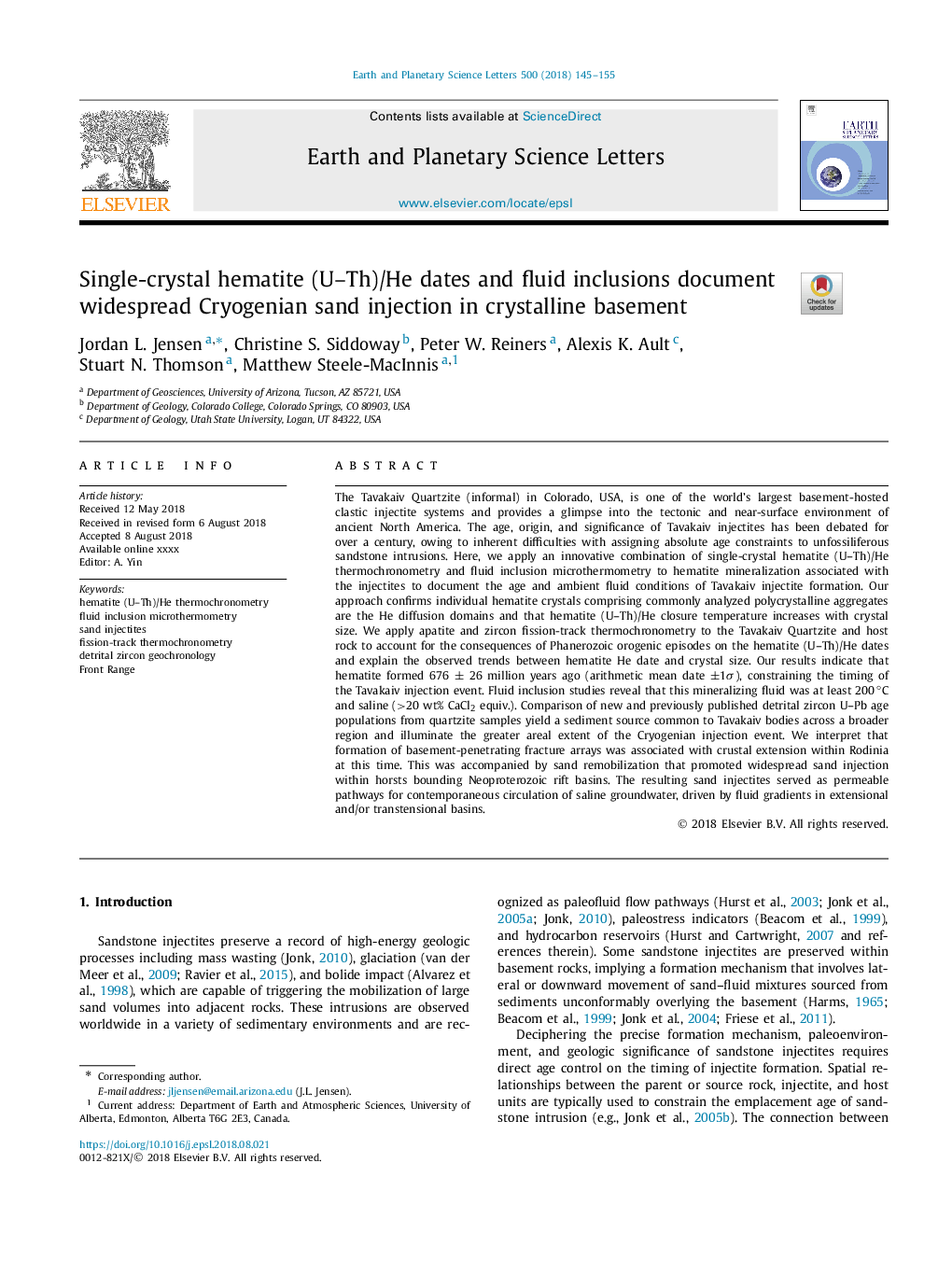| کد مقاله | کد نشریه | سال انتشار | مقاله انگلیسی | نسخه تمام متن |
|---|---|---|---|---|
| 8906663 | 1634656 | 2018 | 11 صفحه PDF | دانلود رایگان |
عنوان انگلیسی مقاله ISI
Single-crystal hematite (U-Th)/He dates and fluid inclusions document widespread Cryogenian sand injection in crystalline basement
دانلود مقاله + سفارش ترجمه
دانلود مقاله ISI انگلیسی
رایگان برای ایرانیان
کلمات کلیدی
موضوعات مرتبط
مهندسی و علوم پایه
علوم زمین و سیارات
علوم زمین و سیاره ای (عمومی)
پیش نمایش صفحه اول مقاله

چکیده انگلیسی
The Tavakaiv Quartzite (informal) in Colorado, USA, is one of the world's largest basement-hosted clastic injectite systems and provides a glimpse into the tectonic and near-surface environment of ancient North America. The age, origin, and significance of Tavakaiv injectites has been debated for over a century, owing to inherent difficulties with assigning absolute age constraints to unfossiliferous sandstone intrusions. Here, we apply an innovative combination of single-crystal hematite (U-Th)/He thermochronometry and fluid inclusion microthermometry to hematite mineralization associated with the injectites to document the age and ambient fluid conditions of Tavakaiv injectite formation. Our approach confirms individual hematite crystals comprising commonly analyzed polycrystalline aggregates are the He diffusion domains and that hematite (U-Th)/He closure temperature increases with crystal size. We apply apatite and zircon fission-track thermochronometry to the Tavakaiv Quartzite and host rock to account for the consequences of Phanerozoic orogenic episodes on the hematite (U-Th)/He dates and explain the observed trends between hematite He date and crystal size. Our results indicate that hematite formed 676 ± 26 million years ago (arithmetic mean date ±1Ï), constraining the timing of the Tavakaiv injection event. Fluid inclusion studies reveal that this mineralizing fluid was at least 200â°C and saline (>20 wt% CaCl2 equiv.). Comparison of new and previously published detrital zircon U-Pb age populations from quartzite samples yield a sediment source common to Tavakaiv bodies across a broader region and illuminate the greater areal extent of the Cryogenian injection event. We interpret that formation of basement-penetrating fracture arrays was associated with crustal extension within Rodinia at this time. This was accompanied by sand remobilization that promoted widespread sand injection within horsts bounding Neoproterozoic rift basins. The resulting sand injectites served as permeable pathways for contemporaneous circulation of saline groundwater, driven by fluid gradients in extensional and/or transtensional basins.
ناشر
Database: Elsevier - ScienceDirect (ساینس دایرکت)
Journal: Earth and Planetary Science Letters - Volume 500, 15 October 2018, Pages 145-155
Journal: Earth and Planetary Science Letters - Volume 500, 15 October 2018, Pages 145-155
نویسندگان
Jordan L. Jensen, Christine S. Siddoway, Peter W. Reiners, Alexis K. Ault, Stuart N. Thomson, Matthew Steele-MacInnis,